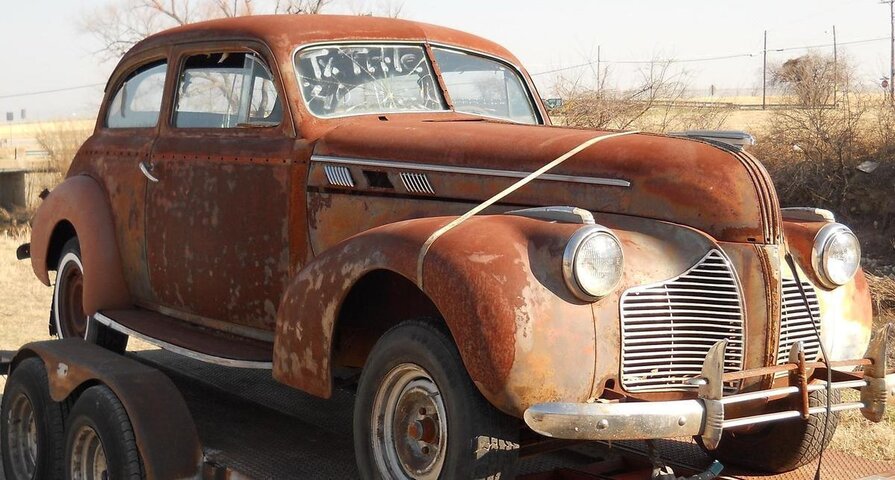Tex
Active Member
I found a car to use for Greased Lightning in Grease. It's a 1940 Pontiac with no engine, transmission or interior so it's about as light as it's going to get. Here's a pic:

I want to build a wagon unit for each axle. I'm thinking about using 4x6 and bolting it together with very long carriage bolts or allthread, then using 4 castors on each unit.
I'll get good estimate of the weight when the guy calls me back, but I'm thinking about 2500 pounds. How would I go about deciding what castors to use? Is there a formula to give me an idea of how much weight each castor will be supporting if there are eight total? Any other ideas? I really think it needs to move like a wagon and not like a car to make it easier to get around back stage.
Edit: I found a formula. Load capacity of castor = Weight of equipment + trolley ÷ 3
So, if my total load is 4000 lbs. these castors should be sufficient overkill, no? http://www.grainger.com/Grainger/Swivel-Caster-1NUY7?Pid=search

I want to build a wagon unit for each axle. I'm thinking about using 4x6 and bolting it together with very long carriage bolts or allthread, then using 4 castors on each unit.
I'll get good estimate of the weight when the guy calls me back, but I'm thinking about 2500 pounds. How would I go about deciding what castors to use? Is there a formula to give me an idea of how much weight each castor will be supporting if there are eight total? Any other ideas? I really think it needs to move like a wagon and not like a car to make it easier to get around back stage.
Edit: I found a formula. Load capacity of castor = Weight of equipment + trolley ÷ 3
So, if my total load is 4000 lbs. these castors should be sufficient overkill, no? http://www.grainger.com/Grainger/Swivel-Caster-1NUY7?Pid=search
Last edited:


